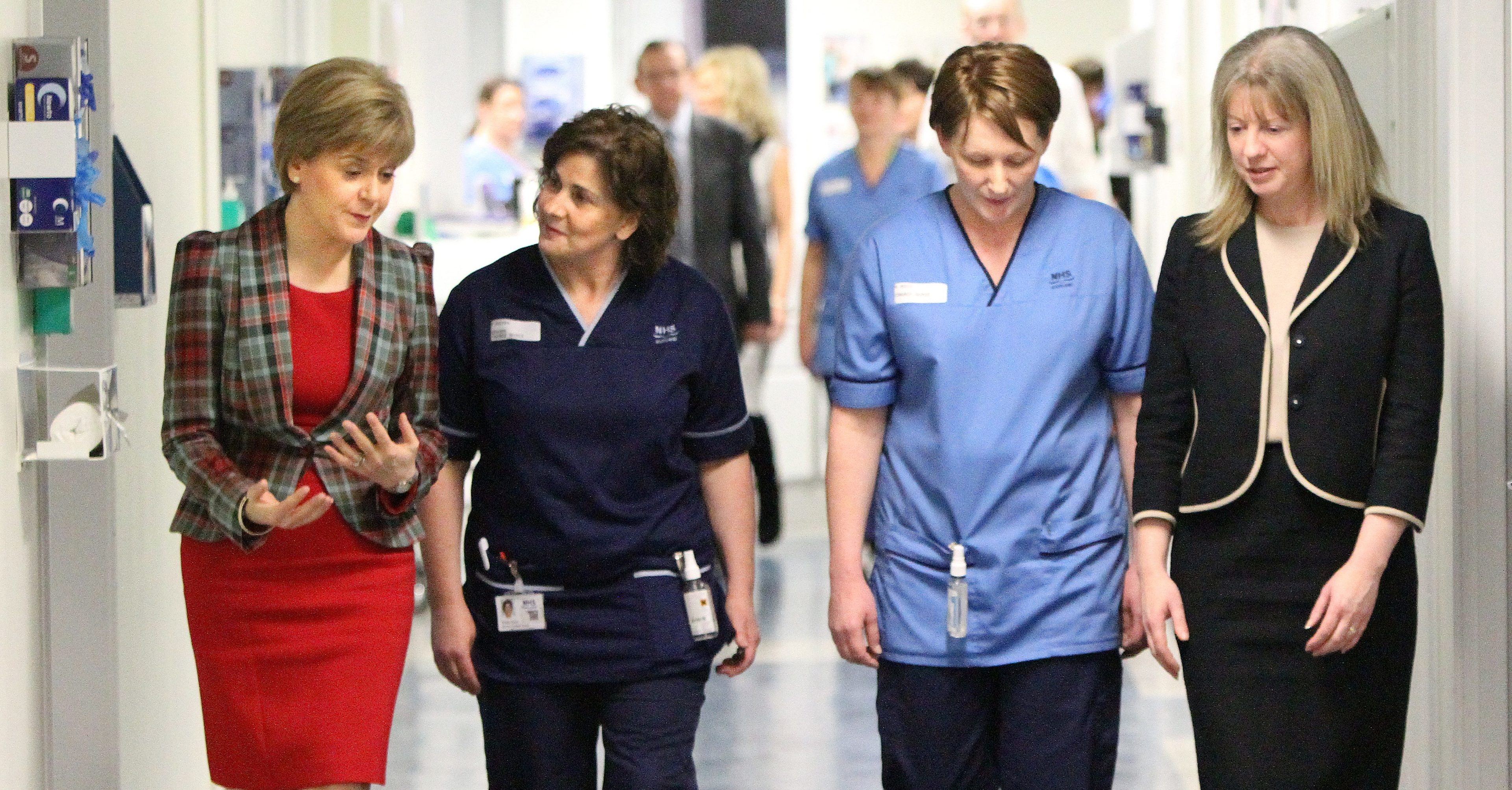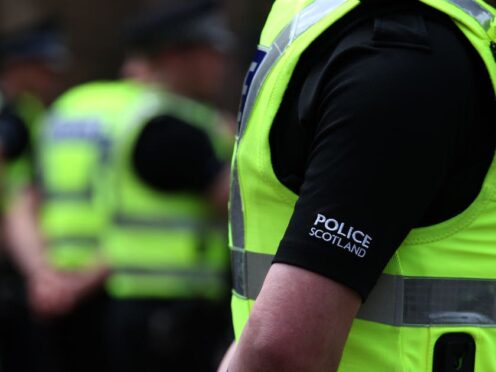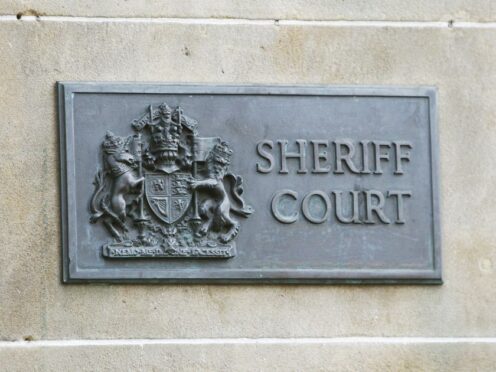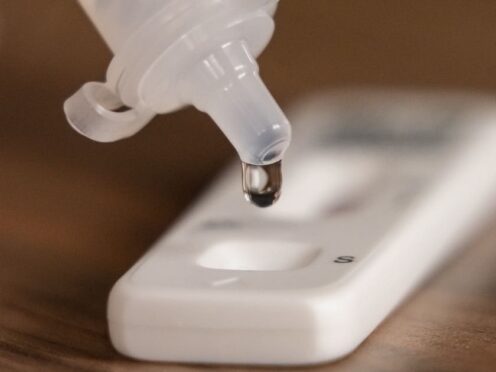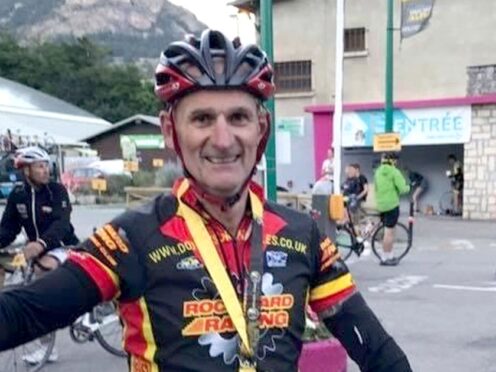Tayside and Fife’s health boards could be axed under a radical NHS shake-up being considered by the Scottish Government, The Courier understands.
In its manifesto for the 2016 Holyrood election, the SNP outlined its plans to review the number of regional bodies in charge delivering medical care for
communities in a bid to improve services and save money.
Such a move, according to senior sources in the health service, is likely to lead to a reduction in the number of local health boards from the current 14 to possibly three or five.
That would favour mergers, with the likes of Tayside and Fife almost certain to be consumed into a larger body.
This larger body could potentially lead to concerns about staff numbers and patient services.
However, senior figures in the Scottish Government say that cross-border working is already occurring and is focused solely on ensuring those who need treatment get it as close to home as possible.
The SNP manifesto said: “In implementing the National Clinical Strategy, we will make sure the existing boundaries between health and integration bodies do not act as barriers to planning local services effectively.
“The number, structure and regulation of health boards – and their relationships with local councils – will be reviewed, with a view to reducing unnecessary back room duplication and removing structural impediments to better care.”
It is unlikely there will be any concrete moves made before First Minister Nicola Sturgeon outlines her programme for government in September. Even then, ministers will want to hold substantial consultation for a sustained period before moving forward.
Public health minister Aileen Campbell confirmed the Scottish Government will spell out its plans during the course of the current parliamentary term.
She said: “As ministers have already pledged, we are committed to reviewing the number, structure and regulation of health boards and their relationships with local councils. Work on this will take place in due course, before the end of this parliament in 2021.”
Any major changes will need to get approval from at least one other political party, given the SNP is currently running a minority government at Holyrood. This is not the first time radical proposals have been considered by the party, though.
Kenneth Gibson, the SNP MSP and former convener of the Scottish Parliament’s Finance Committee, called for health boards and local authorities to be merged under plans he tried to put to the party’s spring conference earlier this year.
Delegates failed to discuss the resolution, which also mooted further devolution from local councils down to town and community level, though.
Party bosses put the lack of debate on plans which caused a pre-gathering storm down to time constraints.
‘Bigger is not necessarily better’
A former member of the Tayside Health Board has warned reducing the
number of health boards in Scotland could be a “retrograde step”, writes Stefan Morkis.
Former Perth and Kinross Councillor Lorraine Caddell, who served on NHS health board for several years, said “bigger is not always better” and warned about the dangers of over-centralisation.
She said: “My immediate reaction is that I would have thought that was a retrograde step.
“The size of the boards we have was to reflect the population and the
different needs of each area.
“I can’t imagine that has changed.”
Scotland now has a single national police force after its separate forces were merged in 2013.
A single national fire and rescue service was created at the same time.
The former Liberal Democrat councillor said: “Anything that makes things bigger is not necessarily better, centralising things doesn’t always make things better.”
She said any decision taken to reduce the number of health boards in Scotland should only be made it the evidence suggests it will improve patient care and medical research.
She added: “I would say this has to be approached with caution. For the local partnerships involved, I would expect a very high level of scrutiny before they could accept any changes.
“If I was still an elected member I would be very keen to be part of the discussion and would want to see the evidence.”
‘It will definitely improve things’
Despite concern in some quarters, Independent councillor and longstanding NHS Fife Board member Andrew Rodger welcomed the potential changes.
Throwing his support behind a call for a reduced number of boards across the country, Mr Rodger said: “I would say quite clearly that I welcome the move.
“I think I would prefer five boards – four mainland and one for the
Highlands and Islands. What I think we really need to do is to have more networking between different services. Tayside, Fife and Lothians could work better across different boundaries.
“I have always advocated for five health boards. I think it will definitely improve things.”
‘SNP record on mergers isn’t good’
Scottish Labour Health spokesperson Anas Sarwar said: “The SNP’s track record on mergers isn’t a good one – from the shambolic creation of Police Scotland to college mergers which saw over 150,000 fewer students going to college.
“Any moves to reorganise our NHS will naturally be met with concern with patients and staff.
“Any reorganisation of our NHS must come after a full public consultation and have the support of NHS staff and the public.
“This cannot be an excuse for yet more cuts to our NHS, which is facing unbearable amounts of pressure under the SNP Government.”
‘Won’t necessarily help patients’
Alex Cole-Hamilton, the Scottish Liberal Democrats’ health spokesman, said:
“The Liberal Democrats are instinctively uncomfortable when it comes to the centralisation of public services.
“We have seen with Police Scotland the calamitous results of mergers when they go wrong.
“We already have problems with accident and emergency waiting times, cancer treatment times and further centralisation down to as little as three health boards is not necessarily an improvement.
“I can understand this is a cash-based decision but it won’t necessarily help patients.”
Police ‘a powerful reminder of dangers of centralisation’
Scottish Conservative shadow secretary for health Donald Cameron said: “It’s imperative we get clarity from the Scottish Government on any proposals to restructure as soon as possible, and it would be premature to comment in detail before seeing these.
“At a time when health boards are still adjusting to the recent integration of health and social care, we must be cautious about committing to further reorganisation unless it can clearly be shown to be in the best interests of patients.
“Whilst there might be some benefits to rationalising the NHS on a wider regional basis, the difficulties experienced by Police Scotland serve as a powerful reminder of the dangers of over-hasty, top-down centralisation.”
